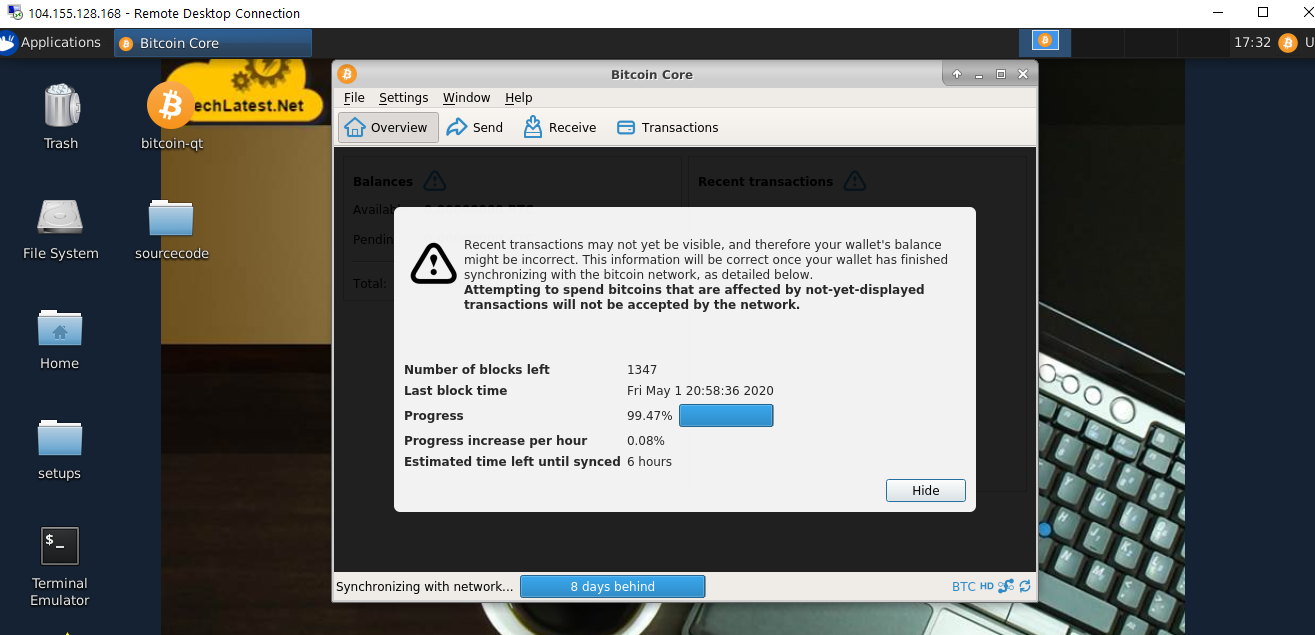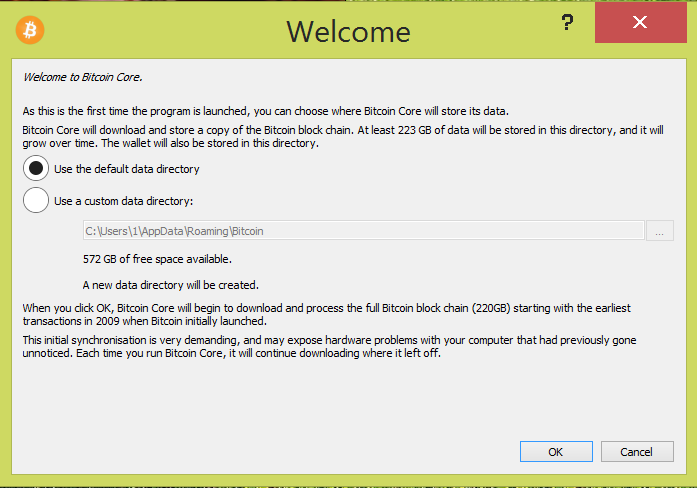

- #BITCOIN DAEMON SYNC FULL#
- #BITCOIN DAEMON SYNC SOFTWARE#
- #BITCOIN DAEMON SYNC PASSWORD#
- #BITCOIN DAEMON SYNC MAC#
#BITCOIN DAEMON SYNC FULL#
It’s common for full nodes on high-speed connections to
#BITCOIN DAEMON SYNC MAC#
If you can meet the following requirements, you’llĭesktop or laptop hardware running recent versions of Windows, Mac OSĪccessible at a minimum read/write speed of 100 MB/s.Ī broadband Internet connection with upload speeds of at least 400Īn unmetered connection, a connection with high upload limits, or aĬonnection you regularly monitor to ensure it doesn’t exceed its Node on weak hardware, it may work-but you’ll likely spend more timeĭealing with issues. Please see theīitcoin Core full nodes have certain requirements. Precautions you would when using any Bitcoin wallet. Its wallet to store your bitcoins, but you must take the same It’s possible and safe to run a full node to support the network and use Do your own diligence to ensure who you get help from is ethical, Setting up your full node correctly to handle high-value and privacy-sensitive Please seek out assistance in the community if you need help This document does notĬover those precautions-it only describes running a full node to help Miners, businesses, and privacy-conscious users rely on particularīehavior from the full nodes they use, so they will often run their ownįull nodes and take special safety precautions. This section will explain those costs and risks so youĬan decide whether you’re able to help the network. Watch this Breaking Monero episode on remote nodes for further information.Running a Bitcoin full node comes with certain costs and can expose you


However, since you never revealed your IP do you really care? This may reveal some information, such as what your restore height could be. Some metadata is leaked to the remote node, such as which blocks are downloaded and when. In failure your wallet will warn you to disconnect from the remote node. The receiver and the amount of the transaction will still be completely hidden. There exists a novel attack that a remote node could attempt to execute, which has a 10% chance of succeeding in revealing the true input of a single transaction. It does not know your private view key (unlike web wallets). Furthermore, a remote node does not know which transactions belong to you. Exit nodes cannot spy on your traffic if you connect to a. The concern about linking your IP to your transactions when connected to a remote node does not hold if you connect to it over Tor. The possible privacy implications of using a remote node over Tor, especially when you connect to a node run by trusted members of the community do not outweigh the effort it takes to set up a local node (in my opinion). And, ideally you want your node to run 24/7.
#BITCOIN DAEMON SYNC PASSWORD#
It requires setting up an admin password to alter the firewall.This may require an additional storage medium besides your Tails USB. Running a local node will require at least 25 GB, even with a pruned node.Troubleshooting connectivity issues on such a restricted operating system is no fun.Every time you boot tails you will have to wait a considerable amount of time to let your node sync to the network before you are able to use your wallet.Synchronization will take forever over Tor.There are many reasons why you wouldn't want to run a local node on Tails: Why does this guide use a remote node instead of a local node? A pruned node is a new type of node introduced in v0.14.1 that only stores 1/8th of the blockchain, saving space. A full node is a node that keeps the entire Monero blockchain. What is the difference between a full node and a pruned node?īesides local and remote nodes, there exist a non-mutually exclusive subclass of nodes called 'full' and 'pruned' nodes. What is a remote node?Ī remote node is node run on a computer controlled by someone else. A wallet connected to a local node will talk directly to the daemon on your computer to obtain information about the blockchain. The blockchain is stored on your own harddrive and your node talks directly to other nodes to keep itself synchronized with the network. What is a local node?Ī local node is a Monero daemon that is run on your computer. The Monero daemon keeps the node in sync with the network and talks to your wallet.
#BITCOIN DAEMON SYNC SOFTWARE#
What is a daemon?Ī daemon is a piece of software that runs in the background of your computer. Instead, a node provides your wallet with enough information about all transactions on the blockchain for your wallet to determine which transactions belong to you. As a result a remote node can't simply provide you with your balance and your past transactions. Unlike in Bitcoin, the Monero blockchain is encrypted. It does this by scanning the blockchain for transactions that belong to you. Your wallet needs to connect to a node to obtain information about your transactions. A node keeps a copy of the Monero blockchain. In this context, a node refers to a computer that runs a Monero daemon.


 0 kommentar(er)
0 kommentar(er)
